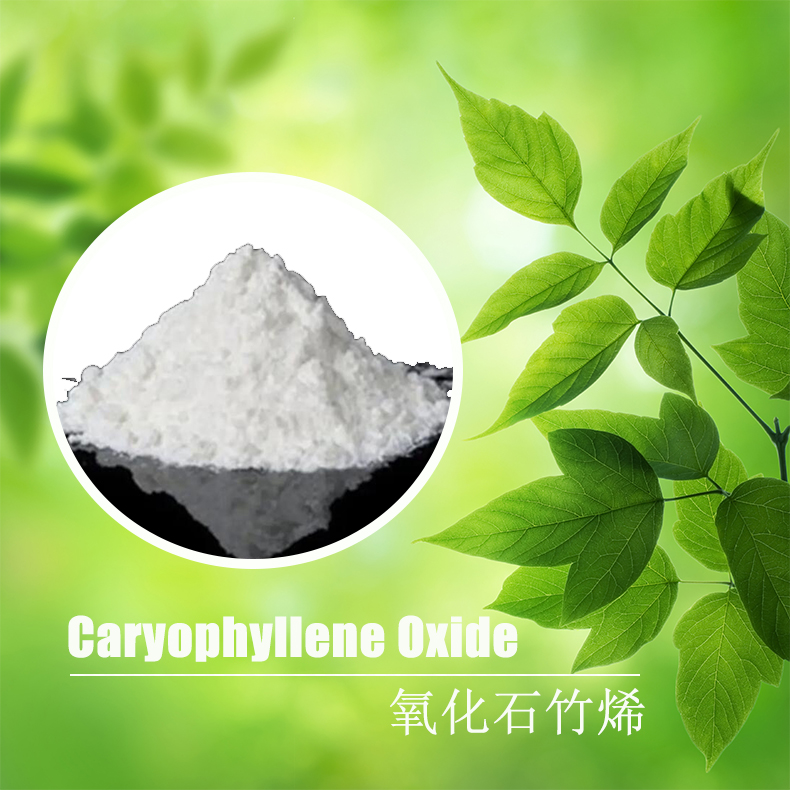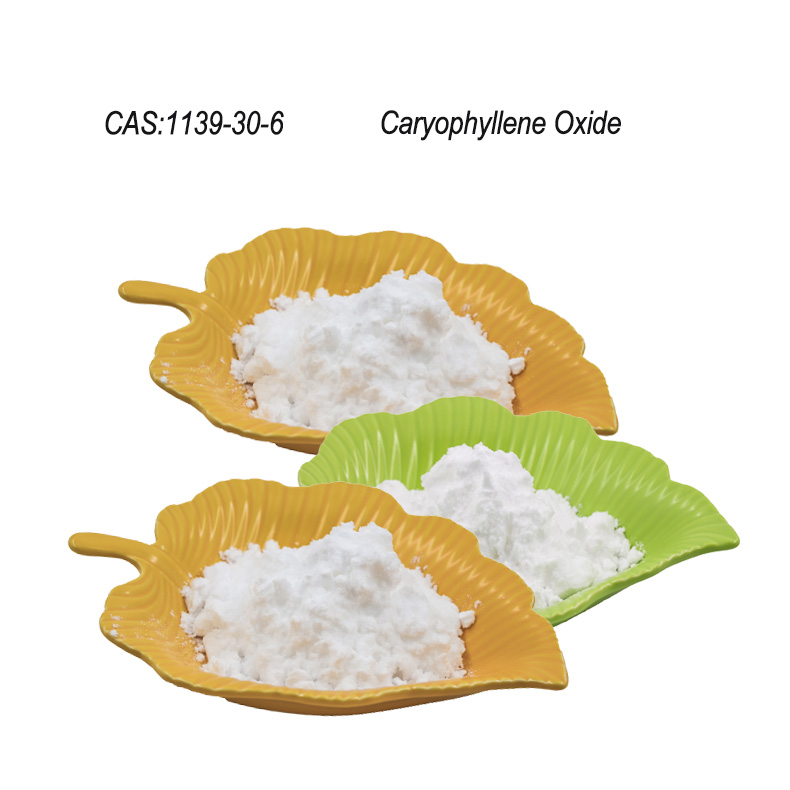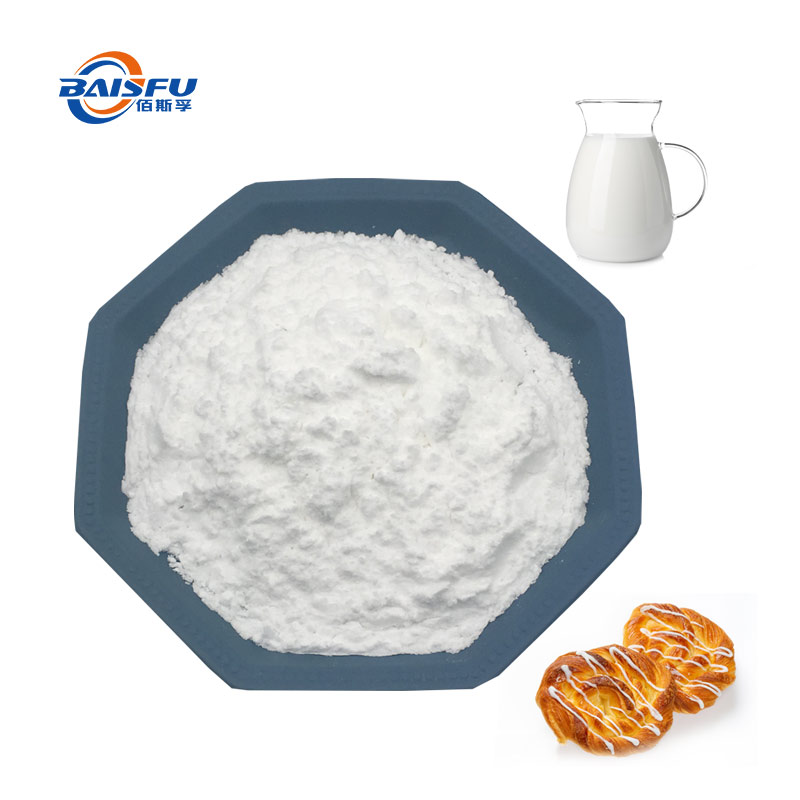Do you need Natural Powder CAS1139-30-6 95%Caryophyllene Oxide products?

Caryophyllene oxide (natural) CAS number: 1139-30-6
Other name: trimethyl-9-methylene-5-oxatricyclo[8.2.0.04,6]dodecane
Chemical formula: C15H24O
Molecular weight: 220.3505
EINECS registration number: 214-519-7
Melting point: 55-62°C
Boiling point: 279.7°C
Density: 0.98g/cm3
Flash point: 119.7°C
Specific rotation: [α]20/D −70°, c = 2 in chloroform
Content: ≧95%
Solubility: chloroform (slight), methanol (slight)
Refractive index: 1.4956
FEMA: 4085
BRN: 148213
MDL: MFCD00134216
Appearance: light yellow to white powder or crystals
Smell: sweet fruity aroma
Halal (MUI) certification status: uncertified
Halal (SHC) certification status: uncertified
Kosher certification status: uncertified
Implementation standard: GB29938-2020
Shelf life: 24 months if unsealed
Storage conditions: This product should be stored in a ventilated and cool place to avoid various impurity pollution
Sensitivity: reacts with strong oxidants
Biological activity: Caryophyllene oxide is an oxidized terpenoid compound found in a variety of plant essential oils. It is used as a preservative in food, medicine and cosmetics. It has anti-inflammatory, anti-cancer and skin penetration enhancing activities.
Tip: Irritating to eyes and skin. If it comes into contact with eyes accidentally, please rinse with plenty of water immediately and seek medical advice.
Product use:
1. Used in food milk and bread aroma (increase fragrance) to improve the taste and make the fragrance last;
2. Used in shampoo, facial mask, cream, shower gel, perfume soap, daily chemicals, lasting fragrance;
3. Used in electronic cigarettes, tobacco, fragrance, increase taste, improve fragrance;
4. Professional perfumers can use the formula to improve the fragrance and adjust the attractive fragrance.
Oxidized caryophyllene is a naturally occurring oxygenated sesquiterpenoid compound, mainly produced by the oxidation of β-caryophyllene under the action of air or enzymes. Its natural sources mainly include:
Natural plant sources
Caryophyllene oxide is widely present in the essential oils of many plants, especially the following plants:
1. Cannabis: During the storage or processing of certain cannabis varieties, β-caryophyllene will oxidize to form oxidized caryophyllene. We will not use this raw material in food additives
2. Clove: The essential oils of clove buds and leaves contain β-caryophyllene and its oxides
3. Black pepper: Black pepper essential oil is rich in β-caryophyllene, which may be partially oxidized to oxidized caryophyllene during storage
4. Basil: The essential oils of some basil varieties contain β-caryophyllene and its oxides
5. Lavender: The essential oils of lavender varieties contain a certain amount of oxidized caryophyllene
6. Rosemary: Some rosemary essential oils contain β-caryophyllene and its oxidation products
7. Pinaceae Leguminosae: Pine resins or essential oils may contain a small amount of oxidized caryophyllene, which is the most commonly used raw material in our domestic production



